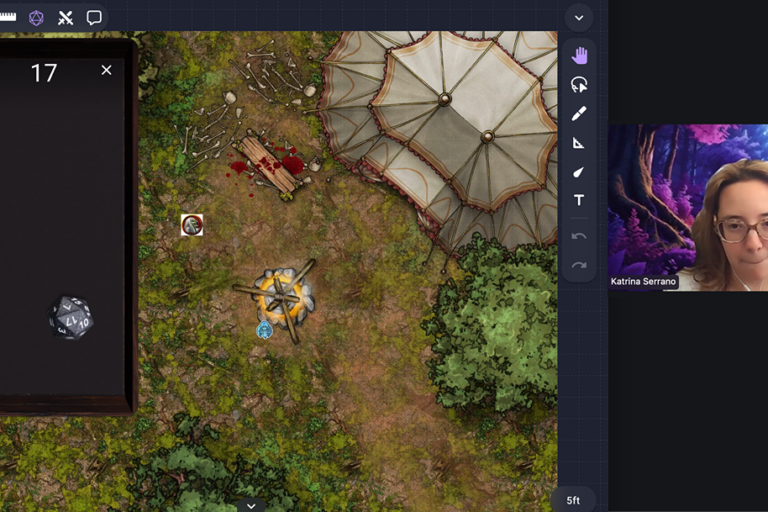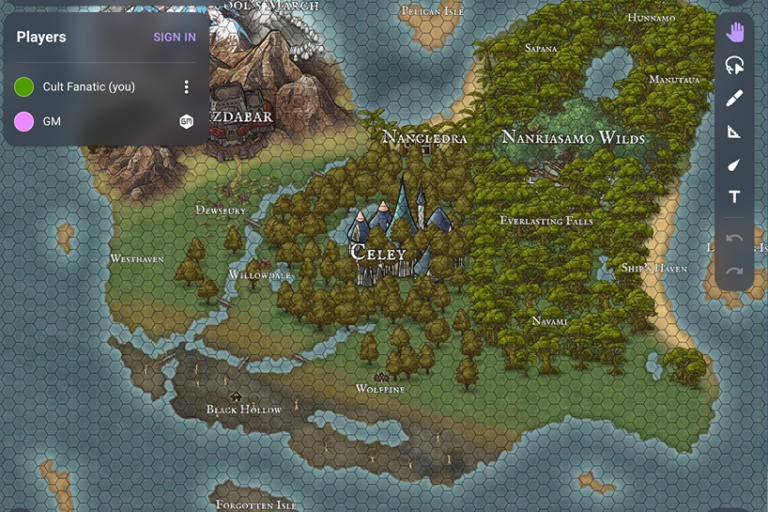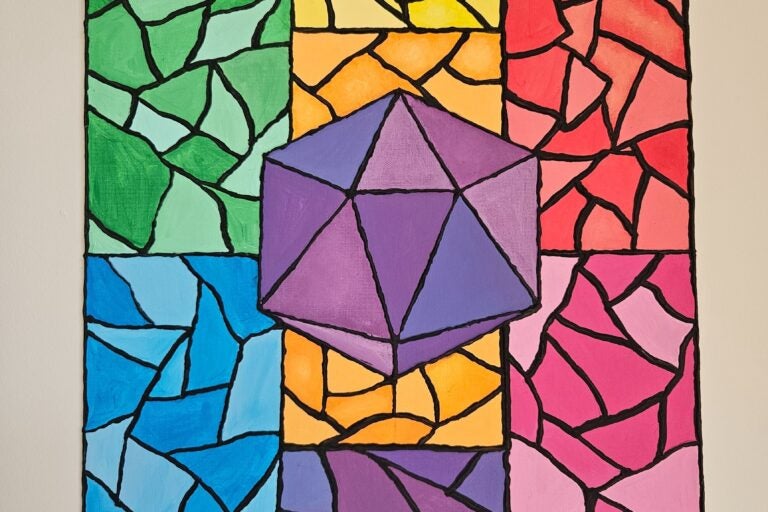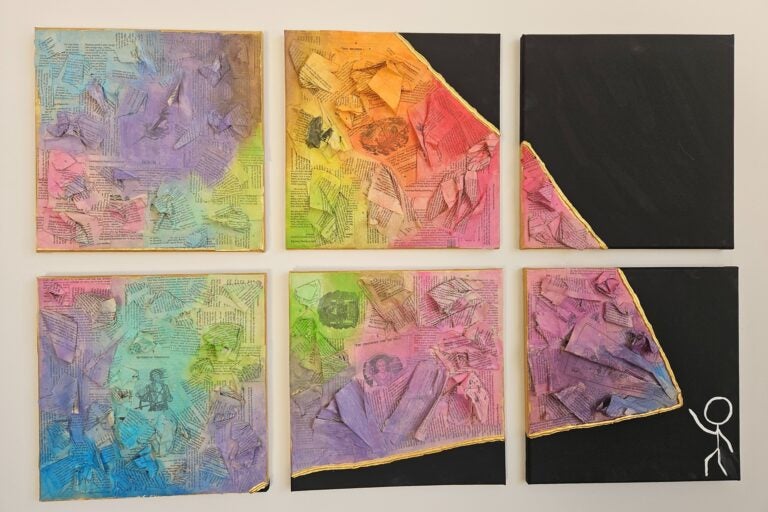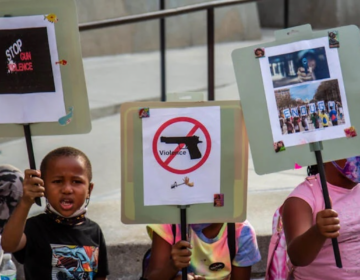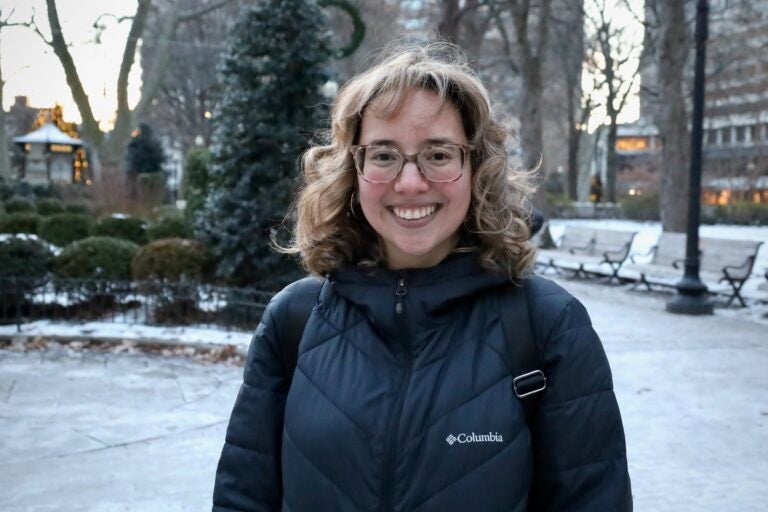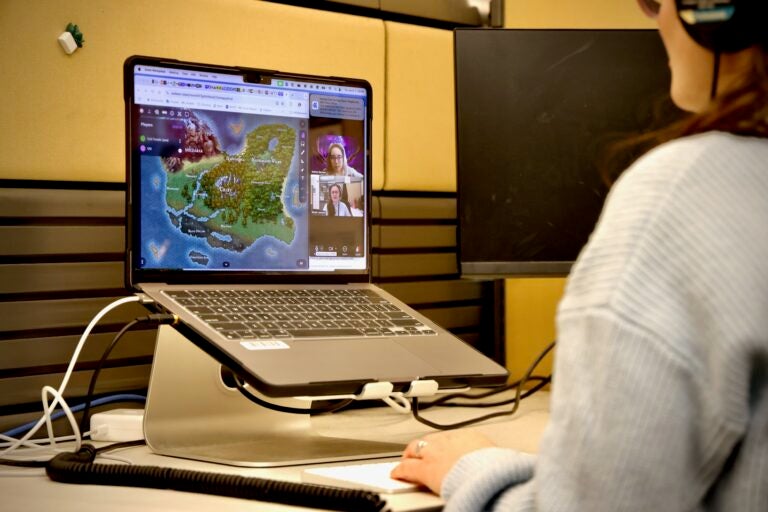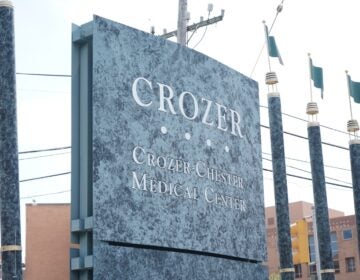Group therapy meets Dungeons & Dragons in this Philadelphia therapist’s mental health practice
Group therapy participants work together on issues like anxiety, trauma and depression through fantasy Dungeons & Dragons characters.
Listen 2:19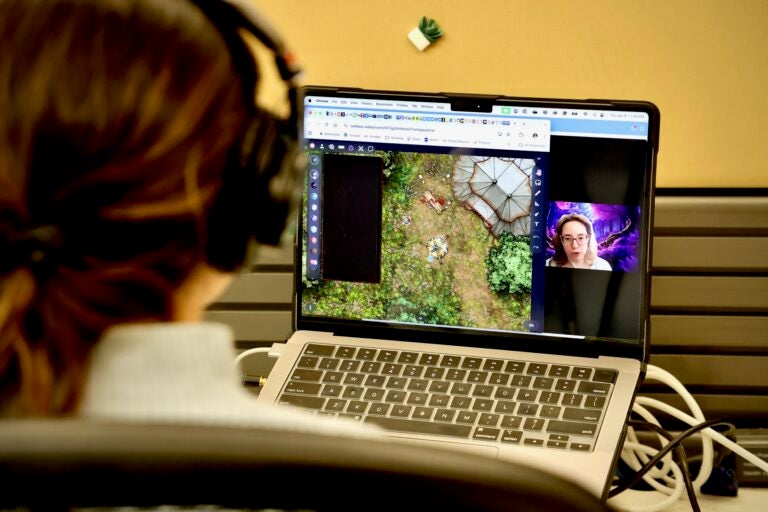
In a virtual world, therapist Katrina Serrano helps her clients to confront their anxieties. (Emma Lee/WHYY)
From Philly and the Pa. suburbs to South Jersey and Delaware, what would you like WHYY News to cover? Let us know!
The world of Asora is made up of lands and creatures of all kinds.
To the north in the snowy mountains is Fool’s March, where goliaths (half-giant people) dwell. Nearby is the Dwarven city of Kizdabar, where precious gems are mined and dwarves, gnomes and orcs live.
In the east lie the beaches of Ship’s Haven and the thick jungles and swamps of the Nanriasamo Wilds. And in the south is the scorched, mysterious land of Black Hollow, destroyed by a centuries-old war and lost to time and history.
This is Katrina Serrano’s vision of Dungeons & Dragons, which as the dungeon master, she created herself through an online fantasy mapping program.
“I home-brew everything. I’m an overachiever,” Serrano said, laughing.
Serrano first fell in love with D&D as a kid, watching older family members play together until she was old enough to join herself.
“We’re all a bunch of nerds,” she joked.
Now as a licensed clinical social worker and psychotherapist in Philadelphia, Serrano is bringing her love for this role-playing, fantasy game world to her mental health practice combining D&D with group therapy.
“D&D in therapy is just a tool,” she said. “It’s the world where you can help people explore things, [do] exposure therapy — I would say that’s one of the biggest things out of this,” she said. “It’s a safe environment where someone can challenge themselves in a way they know they can leave and be OK. That’s the beauty of it.”
During the COVID-19 pandemic, Serrano went into private practice and was working on treatment plans when she accidentally found a training program to become a certified therapeutic game master in D&D therapy. It seemed like a perfect match, so she signed up.
After completing the program, Serrano was ready to bring it into her practice, but didn’t know if anyone would be interested. Her doubts were quickly dispelled.
“I started with just my current caseload of individual clients, and a lot of people were really excited about it,” she said.
As dungeon master, Serrano meets with a small group of participants online every other week over the course of about six to seven months. Every group therapy session lasts two hours, which allows for some traditional therapy discussions and check-ins at the beginning, 90 minutes of play and a debrief at the end.
The overall goal of group therapy is for participants to work together on coping skills, communication and decision-making while managing anxiety, trauma, depression and other conditions.
In the game, players do this by experiencing situations through the characters they build. They can embody creatures like an aarakocra, a bird-type person with high perception skills; a werehawk, a humanoid cursed to become a feral hawk hybrid who is at risk of succumbing to bloodlust and hurting others; or a half-orc barbarian who is strong, but impulsive.
These virtual characters, each with individual backstories, temperaments and abilities, can represent the flaws or weaknesses that participants want to work on in real life, like people-pleasing or control issues. They might represent their “ideal self” — someone with qualities they aspire to have, like confidence and charisma. They can also represent a version of themselves that they feel pressure to be in the world right now.
“[A client] was a half-orc druid and was this run-into-the-fray, confident, ‘I’m going to make decisions, I’m a leader’ character,” Serrano said. “Because that’s who she is on the outside, that’s her mask.”
Through a series of journeys, battles and assignments, also called campaigns, these characters and players explore feelings and decisions as they dive deeper into their own real-life behaviors, fears and concerns.
Serrano shared what one of her client’s said about participating in D&D group therapy.
“She said, ‘Through the game, I am learning how to trust my instincts when it comes to decision making and to be comfortable with the possibility of making the wrong choice sometimes, and learning how to forgive myself for real or perceived mistakes,’” Serrano read from a notebook.
D&D group therapy doesn’t replace individual one-on-one treatment, but rather compliments it, Serrano said. She added that people don’t need prior knowledge or experience to join the game.
“The beauty of this D&D therapy is it’s fun and it’s kind of a gentle entrance if you’ve never been in therapy before,” she said.
By the end of a six-month-long campaign, Serrano said participants might just find themselves on a path to one day becoming a dungeon master themselves.

Get daily updates from WHYY News!
WHYY is your source for fact-based, in-depth journalism and information. As a nonprofit organization, we rely on financial support from readers like you. Please give today.


